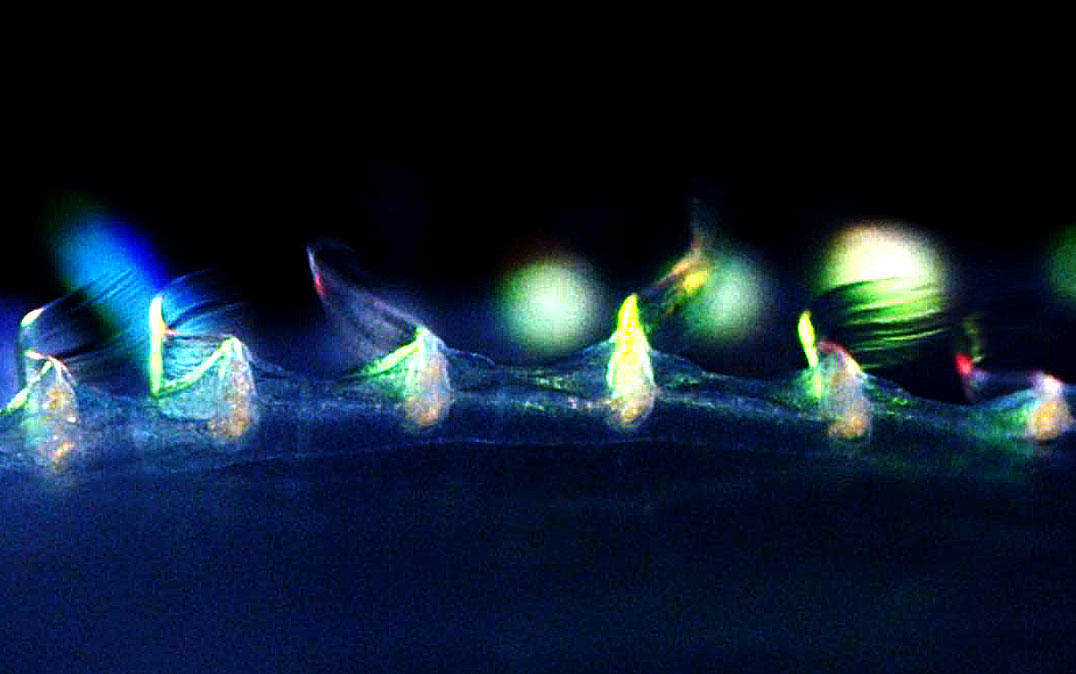University of Tsukuba researchers discover a protein that controls the unique movement of comb jellies.
The rainbow of moving lights visible along the sides of comb jellies is one of the most fascinating sights in the ocean. Now, Japanese scientists have found a protein that controls the movement of these lights and, by extension, the movement of these unmistakable underwater creatures.
In a recent study published in Current Biology, scientists from the University of Tsukuba identified a protein in comb jellies that are crucial for the development and movement of their comb plates, the comb-like bodily structures that give these animals their name.
Comb jellies, also known as ctenophores, can be found from the ocean’s surface to its depths. These hungry marine predators are distinguished by eight rippling bands of bright, iridescent color running along their sides. These bands are made up of rows of comb plates with tens of thousands of tiny hair-like structures known as cilia. Comb jellies are propelled through the water by the beating of these comb plates. The cilia’s synchronized wave-like movement scatters surrounding light, resulting in a rainbow of colors.
“Cilia are bundled together with structures called compartmenting lamellae (CL),” says author Professor Kazuo Inaba. “These lamellae are thought to be important for the orientation and synchronous movement of cilia. In a previous study, we found a protein, called CTENO64, that is needed for the orientation of the cilia, but that’s found in only one part of the CL. We still didn’t fully understand the overall architecture of the lamellae.”
The comb plate is divided into two distinct compartments: proximal and distal. With the knowledge that CTENO64 is found in the proximal compartment, and to better understand the molecular composition of the CL, the researchers examined whole proteins found throughout the comb plate. They identified those that were both abundant and showed gene expression in only comb plate cells. This search elucidated 21 proteins, including a newly detected protein called CTENO189, which is found in a different region of the CL than that of CTENO64.
“When we knocked out the gene for this new-found protein, the CL did not appear at all in the distal region of the comb plate,” explains Professor Inaba. “A closer look at the structure showed that while the comb plates formed normally, the cilia were in disarray and the normal wave-like movement pattern disappeared.”
Together, these studies indicate that the two distinct regions of the CL play different roles in controlling the movement of comb jellies. The proximal CL provides a strong building foundation, while the distal CL ensures an elastic connection between cilia. Together, these proteins found in the CL maintain the rippling movement that propels comb jellies through their ocean environment.
Reference: “Two distinct compartments of a ctenophore comb plate provide structural and functional integrity for the motility of giant multicilia” by Kei Jokura, Yu Sato, Kogiku Shiba and Kazuo Inaba, 21 October 2022, Current Biology.
DOI: 10.1016/j.cub.2022.09.061
The study was funded by the Japan Society for the Promotion of Science and the Ministry of Education, Culture, Sports, Science and Technology, Japan.
Share your story or advertise with us: Whatsapp: +2347068606071 Email: info@newspotng.com












